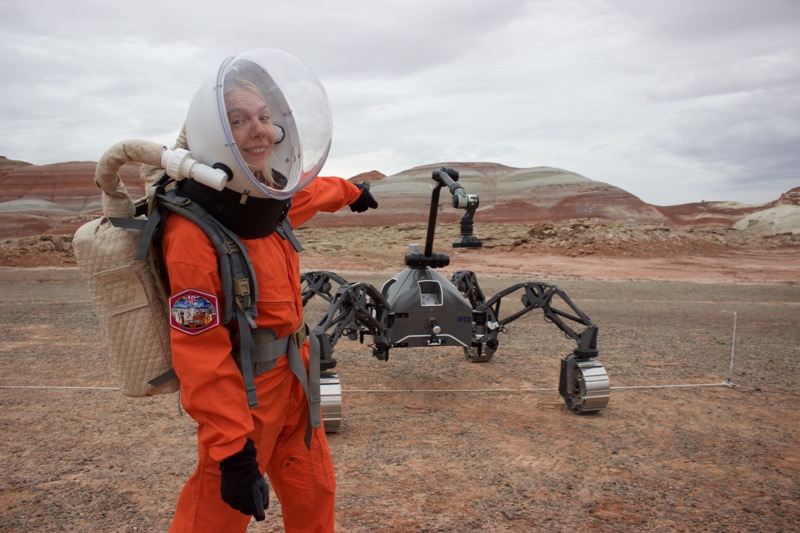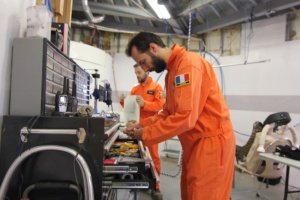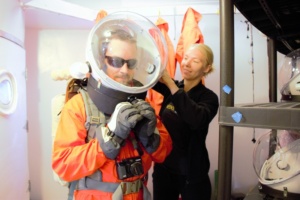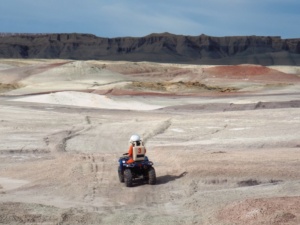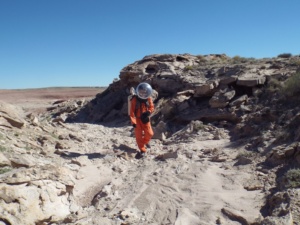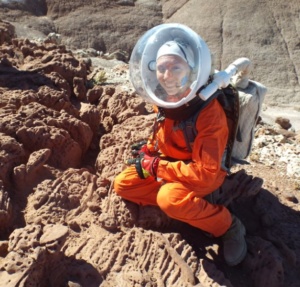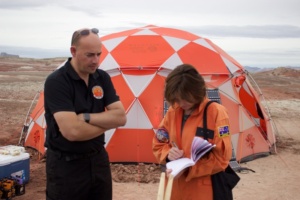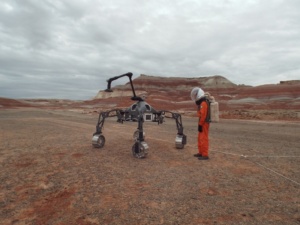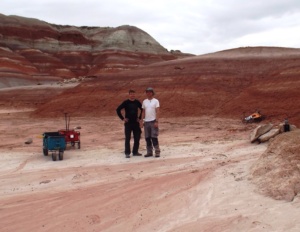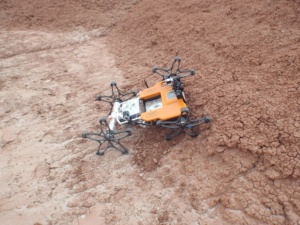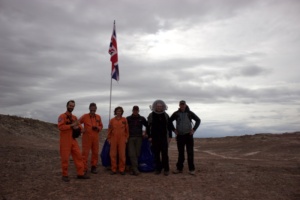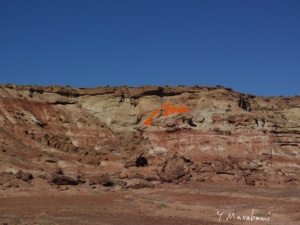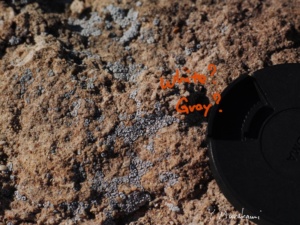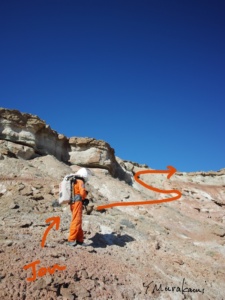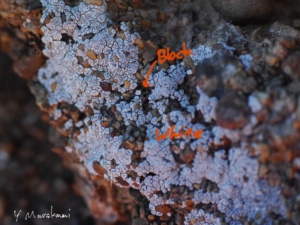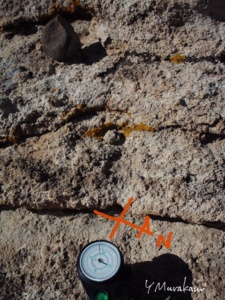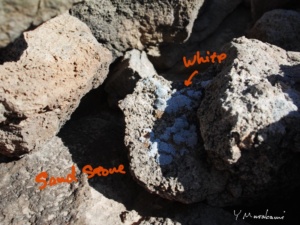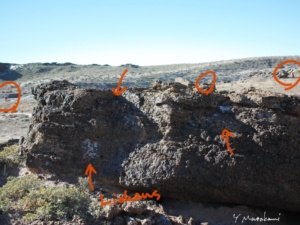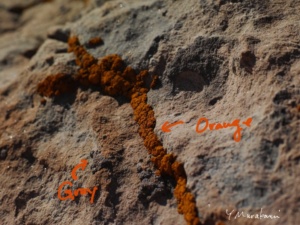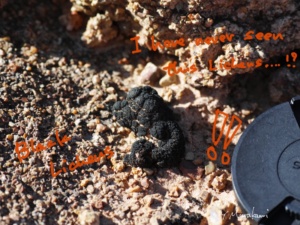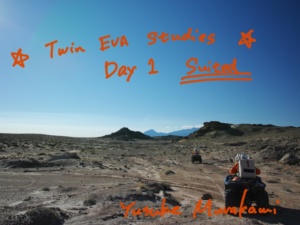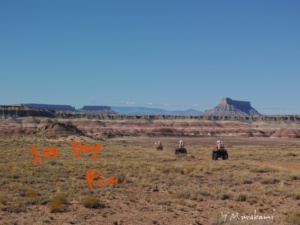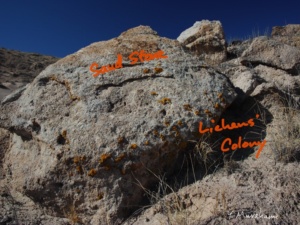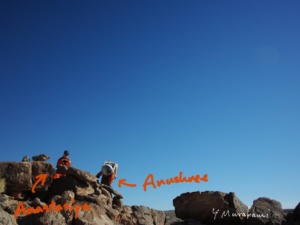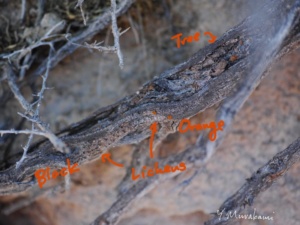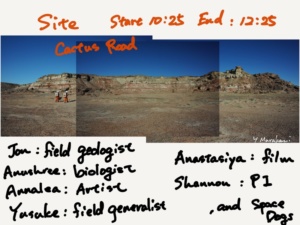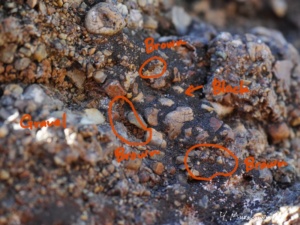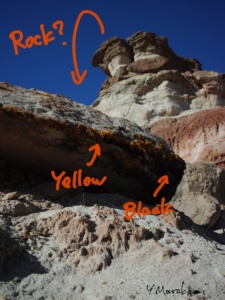
Archive: 04 Nov 2016
Sol Journal – November 4th
Little helpers on Mars
Mars is the only planet that inhabited by robots. Since the year 1960 humans have tried to send their spacecraft to the red planet. The most unlucky country to reach the planet was Soviet Union. It had 17 tries and only 3 successful. However, at the same time the USSR studied Venus very well. Even though Venus is called the sister of Earth, because it has very similar size and composition, to describe its atmosphere, the perfect word would be “the hell”. There are acid rains, lighting, which are called “the electric dragon of Venus”, the dense air pressure, 96,5% of carbon dioxide, the heavy greenhouse effect and the temperature on the surface of 740 К (467 °C). Considering all those obstacles the Russian spacecraft landed on Venus with no problems, and worked for a few hours. Whereas on Mars we have thin atmosphere, examined sites for landing and still the luckiest and experienced country is USA. The statistics are 21 tries and 15 successful.
What do NASA know that other countries are missing? Specially, with the latest news about the crash of ESA’s Schiaparelli lander on Martian surface, space agencies are still trying to figure out why red planet is so hostile. Yet hostile not to all. The Opportunity rover has become a part of Martian history already since it has explored the planet for more than 13 years. When you think that it still works without any major maintenance, taking into account the hazardous environment and compare it to average cars, which have to get serviced every year to work smoothly. This is what amazes us and gives a great credit to the engineering team. There is also another rover rolling the Martian dunes and singing once a year to itself a lonely birthday song – the Curiosity. Up in the Martian sky you will see several orbiters watching you. The latest ones are American Mars atmosphere and volatile evolution (MAVEN) and Indian Mars Orbiter Mission (MOM). India is a unique country for screwing up all Martian spacecraft statistics, which I mentioned before, and showing that you can successfully send an orbiter to Mars with the first attempt and with less money and time spent. Therefore, is there a one recipe for the perfect way to orbit and land on the red planet? We have at least 10 more years to find it out!
Not far from MDRS three space agencies have set up their camps for field tests of their rovers. For this special occasion, we were out of simulation in order to visit our neighbors. The UK space agency tests rover with PanCam, which later will be mounted on ExoMars. The Canadian space agency tests a sampling rover, which will be able to return the samples back to a simulated Earth return vehicle. The German space agency’s rover reminded us of a spider, which can climb the Martian hills, collect samples and get refilled with new batteries brought by a smaller rover helper.
Rovers, orbiters, and landers have become human senses on Mars. After the first astronauts, cosmonauts or taikonauts land on the red planet and start to explore it, they will get their personal little helpers. Robots will play a crucial part of successful human existence on Mars. Moreover, we still try to understand this balance in human-robot relationship, the concept of new world we started to live in so sudden – the world, where gadgets became part and parcel of our lives. It is a big risk to hand your life over to a machine, but without taking this risk, we won’t be able to pave the way into solar system and further!
EVA Narrative – November 4th
WHAT’S IT LIKE TO WEAR A (SIMULATED) EVA SUIT?
Jon Clarke
Putting on the simulated space suits we use at MDRS is a very different experience to just going outside casually, even when the goal – be it science or engineering – is similar.
First you have to suit up. We wear orange flight suits over our clothes. How many clothes you will wear underneath depends on the outside temperature. But it can get very hot in the suits even when the temperature is pleasant outside. The backpack, which contains our ventilation system and batteries, weighs 12 kg. With the helmet it weights 13 kg. With radio, boots, and clothes your total load is 15 kg, not counting tools and emergency equipment. When these are included you can be carrying loads similar to the Apollo astronauts on the Moon. Everything has to be put on in the right order with help, the radios and head pieces tested, and all our equipment assembled. The backpacks and helmet rings need careful adjustment or you soon end up with sore shoulders, stiff back, a sore neck –or all three.
Then you can cycle yourself through the airlock, which involves a five minute wait in the airlock. Maybe your crew pipes some appropriate music over the radio, maybe not. Then you can head off, either on foot or on the quadbikes. If you have forgotten something, you either have do without, or wait for it to be cycled through the airlock.
The very first thing you are aware of is time. While the batteries that power our air supply are good for six hours, perhaps more, the big constraint for is often water. There is no water supply in the suit and, when the weather is warm, as it has been, you can get thirsty really fast, dehydrating at a rate of up to half litre an hour. So you need to plan all our work within a constraint of 3-4 hours. You look forward to cooler weather and perhaps being able to stay out longer. Every breath, every step, is distinctly closer to the time you have to come back inside. It’s not as extreme when scuba diving, but the mindset you need is similar.
The second thing you are aware of is enclosure. The helmets cut you off from most outside sounds, the main noises you do hear are the radio in your ear and the hum of the fans – a very comforting sound. You are isolated from the wind-and the cooling breeze. Your vision is limited, you can’t see sideways without turning your whole body, your feet without bending over, your body, arms, and legs at all. There are usually some dust, smears and scratches on your lexan bubble, increasing glare. The lexan is also not entirely even, so the view ripples slightly as you move. Us older people with multi-focals are used to this, but is disconcerting to some younger users! The boots limit your sense of contact with ground and the gloves your dexterity and tactility. You can’t inspect things closely, or blow dust off a rock or your camera lens.
Over easy ground your mobility is mostly unrestricted, not unlike hiking with a heavy backpack. You need to be aware of your larger size and mass, and of course poorer vision. You have to be careful not to over-exert yourself, the fans supply fresh air at a fixed rate and CO2 and water vapour is flushed out at a complex rate out the bottom of the next ring. So if you over do things you end up with CO2 build up and helmet fogging. It’s not like a scuba unit with a demand valve. So you have to pace yourself, especially as the ground gets steeper. Take your time!
On rough terrain, whether flat or sloping, you have to be really careful. If you fall over you could end up with face, neck, back, and limb injuries, or all of these. So must you think about your size, balance, where your feet are, and what’s underfoot at all times. Again, take your time, don’t hurry, again think every step through before you take it.
At least the suits are flexible, unlike real gas-pressure suits. You can bend over, sit, kneel and climb. But maybe on Mars you would be using a mechanical counter pressure suit, which will be much more flexible, and more like what you are wearing. The life support system on your back might be lighter too!
Communications are by UHF radios with push-to-transmit control. Those not used to radio discipline soon learn not to talk over the top of each other! Voice activated radios (VOX) would be better, but the VOX setting is not reliable. Transmission range is limited in the terrain round MDRS so once you are more than a few hundred from the station the EVA team is on its own!
Eventually all this becomes familiar and you start to enjoy the experience. The interior of your suit becomes an intimate, personal space, even cosy. Going outside on an out-of-sim day feels strange and unnatural . Seeing other people – tourists – without suits is something of a shock. When you reach this mental level you know you have really arrived, psychologically speaking, on Mars!
Sol Summary – November 4th
Sol #36
Summary Title: The morning to talk and think and the afternoon to meet and greet.
Summary of Activity:
This morning early, we all met to debrief from the last two days of field operations. We’ve just completed two rigorous trials in the field with a focus on how we perform in our work with and without space suits. This is our day to recover and have time to determine the quantity and quality of science return from the last two EVA’S, building upon what we have learnt. We sat around the table this morning and compared notes, discussing how we can apply that knowledge over the next two days of EVA’s.
We are fortunate to have so many international crews working in our area this month. This afternoon we were invited to take one of our space suits over to the UK Space Agency camp. It’s remarkable for our crew to have the opportunity to mix with anyone at all and it’s even more amazing to meet this great rover team from all over the United Kingdom and see their analogue field work. In some ways it has quite similar goals to the science operations project work we do here. Like our trials over the last few days, the aim of their work is to put together a field trial that focuses on mission operations.
I interviewed Mike Curtis-Rouse and several of his team for my space.com blog and Anastasiya videoed some of the crew for her Russian media blog. Some of the team had never been in the field, never been in the desert and never been in a sleeping bag!
On the way home we dropped into the German camp and filmed their autonomous Spider Rover in action. Spag Bol for tea cooked by Jon Clarke. Early night in preparation for our EVA tomorrow.
Mission Status: Operations are on track. Currently we are in the process of planning science for the fortnight in line with the science goals regarding lichens, hypoliths and halophiles.
Crew status: All healthy and well, yoga this afternoon, fingers crossed.
HSO: Nothing to report.
Engineering Maintenance: Claude-Michel is monitoring the smartpot project as well as his usual jobs checking water, suits and back packs, etc. What would we do without him? He keeps everything ticking over.
EVA: Out of SIM Alex, Anastasiya, Jon and I visited the U.K.. Space Agency camp while Claude-Michel and Anu stayed home and wrote their reports and logs.
Plans for tomorrow: EVA, which is the third day of our science operation trials. Tomorrow we will all be in the field working out of simulation.
Miscellaneous: nada.
Weather: cool, quiet, grey skies, almost time for thermals.



